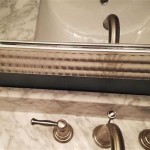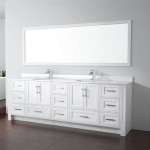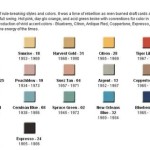Wash Tub Bathroom Sink: A Rustic and Functional Design Choice
The wash tub bathroom sink represents a distinctive design aesthetic, merging rustic charm with modern functionality. This type of sink departs from conventional designs, offering a unique visual appeal and a potentially more spacious basin. Its origins lie in the repurposing of galvanized steel tubs traditionally used for laundry, transforming them into statement pieces within the bathroom environment.
The appeal of a wash tub sink extends beyond mere aesthetics. It often serves as a conversation starter, reflecting a homeowner's personal style and appreciation for repurposed materials. The sink's substantial size and depth can also offer practical advantages, making it a suitable option for families or individuals who require ample space for washing and grooming.
Aesthetic Considerations and Design Versatility
The wash tub sink offers a unique aesthetic profile, lending a rustic, industrial, or farmhouse-inspired touch to any bathroom. The galvanized steel of the tub provides a cool, metallic contrast against warmer, more traditional materials, such as wood and tile. This inherent contrast allows for creative design possibilities, enabling the sink to serve as a visual anchor within the bathroom.
Beyond the material itself, various design modifications can further enhance the sink's aesthetic appeal. Painted finishes, decorative rivets, and custom stands can create a personalized and distinctive look. The sink can be mounted in a variety of ways, including wall-mounted, freestanding on a pedestal, or integrated into a vanity, providing flexibility in terms of placement and overall bathroom layout.
The sink's shape also contributes to its aesthetic versatility. While traditional round or oval tubs are common, rectangular or even custom-shaped tubs can be used to create a more contemporary or avant-garde design. The choice of faucet style is also crucial. A vintage-inspired gooseneck faucet can complement the sink's rustic charm, while a sleek, modern faucet can create an intriguing juxtaposition of styles.
Consideration must be given to the surrounding décor to ensure a cohesive and balanced design. Complementary materials, such as reclaimed wood, exposed brick, and wrought iron, can reinforce the rustic aesthetic. Conversely, the sink can be paired with more modern elements, such as minimalist tiling and sleek lighting fixtures, to create a more eclectic and visually interesting space.
Practical Advantages and Considerations
Beyond its aesthetic appeal, the wash tub sink offers certain practical advantages. The large basin provides ample space for washing hands, faces, and even larger items, such as small clothing items or cleaning supplies. This added space can be particularly beneficial in high-traffic bathrooms or for individuals who require greater dexterity or assistance with personal hygiene.
The depth of the tub can also help to minimize splashing and spills, keeping the surrounding countertop and floor cleaner. This is particularly relevant in bathrooms used by children, who may be more prone to making a mess. The sturdy construction of most wash tubs ensures durability and longevity, making it a cost-effective investment in the long term. The galvanized steel is resistant to rust and corrosion, provided it is properly maintained.
However, there are also practical considerations to keep in mind when choosing a wash tub sink. The size and weight of the tub can pose installation challenges, requiring professional assistance to ensure proper mounting and plumbing connections. The depth of the basin may also require adjustments to the height of the countertop or vanity to ensure comfortable usage for all users. Taller individuals may find a deeper sink more comfortable, while shorter individuals may require a lower mounting height.
The smooth, non-porous surface of galvanized steel is generally easy to clean, requiring only mild soap and water. However, abrasive cleaners and scouring pads should be avoided, as they can scratch the finish. Regular cleaning is essential to prevent the buildup of soap scum and hard water stains. The interior of the tub should also be thoroughly dried after each use to prevent rust formation, especially if the galvanized coating is damaged or worn.
Water pressure and drainage are also important considerations. The large basin of a wash tub sink requires a sufficient water flow to fill it adequately. The drain should also be properly sized to handle the increased volume of water, preventing overflow and ensuring efficient drainage. A professional plumber can assess these factors and make recommendations for optimal plumbing configurations.
Installation and Plumbing Requirements
Installing a wash tub sink is a more complex process than installing a standard bathroom sink. The weight and size of the tub require a sturdy mounting system, whether it is wall-mounted, freestanding, or integrated into a vanity. Wall-mounted sinks require reinforced wall studs to support the weight of the tub when filled with water. Freestanding sinks require a stable base or pedestal to prevent tipping or movement. Vanity-integrated sinks require a custom-built or modified vanity to accommodate the tub's dimensions.
Plumbing connections are another critical aspect of the installation process. The drainpipe must be properly aligned and sealed to prevent leaks. The faucet should be chosen to complement the sink's style and functionality, and its connections must be compatible with the existing plumbing system. Hot and cold water supply lines must be properly connected and secured.
Professional plumbing assistance is highly recommended for installing a wash tub sink. A qualified plumber can ensure that all connections are properly made, that the drainpipe is adequately sized, and that the water supply is sufficient. They can also address any potential issues, such as uneven floors or walls, that may complicate the installation process. Proper installation is crucial to ensure the sink's long-term functionality and to prevent water damage.
In addition to the plumbing itself, consideration must be given to the surrounding environment. The walls and floor around the sink should be protected from water damage. Waterproof sealant should be applied to all joints and seams to prevent moisture penetration. Proper ventilation is also important to prevent the growth of mold and mildew. A bathroom exhaust fan can help to remove excess moisture and maintain a healthy indoor environment.
Finally, local building codes and regulations should be consulted before starting any plumbing work. Permits may be required for certain types of installations, and inspections may be necessary to ensure compliance with code requirements. Adhering to all applicable codes and regulations is essential to ensure the safety and legality of the installation.
Choosing a wash tub bathroom sink can add character to your bathroom. Careful planning, professional execution and consideration will allow you to enjoy all of the benefits this distinctive design element offers.

Washtub Sink Custom Laundry Room

Jug Faucet Oval Galvanized Tub Large To Small Sizes Rustic

Washtub Sink Custom Laundry Room

48 Rustic Galvanized Wash Tub Laundry Room Sink

Diy Galvanized Tub Sink The Prairie Homestead

Best Images Rustic Laundry Rooms Ideas On Room See More About Farmhouse Dryers House Bathrooms Wash Tubs

Freestanding Utility Sink Laundry Tub Floor Mount Wash Bowl Basin Single Faucet Com

24 X 46 Floor Mount Double Bowl Veritek Laundry Tub Vtb

Rugged Tub 32 In X 22 Polypropylene White Laundry Sink With 2 Hdl Non Metallic Pullout Faucet And Installation Kit G32wk1 The Home Depot

Galvanized Tub Google Search Bathroom Sink Vanity Wash Bathrooms Remodel
Related Posts







